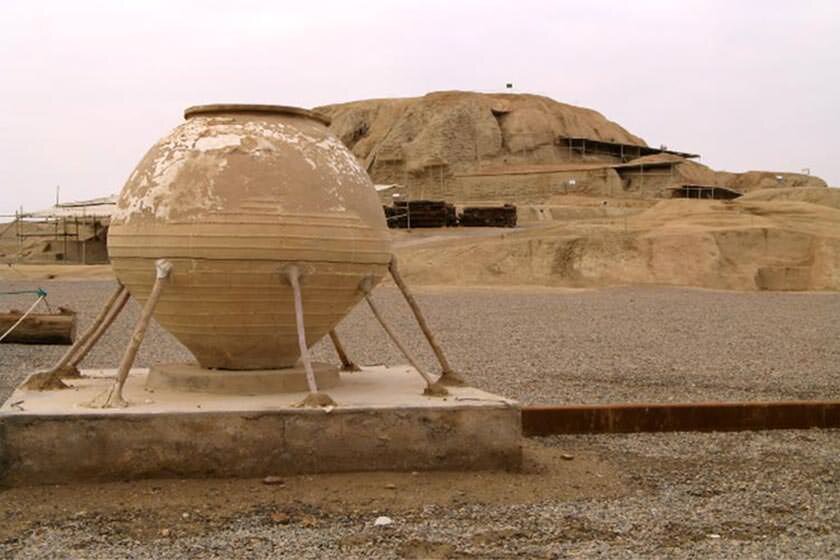Exhibition to display unseen relics of Sialk

TEHRAN – The National Museum of Kashan is scheduled to hold an exhibition of the relics discovered in Tapeh Sialk (“Sialk hills”), which are not displayed previously, in an exhibition by the end of the current Iranian year 1399 (ends on March 20, 2021).
The relics have been discovered during several excavation projects at the site, which is one of the oldest and richest archaeological sites in central Iran, mostly by French archeologist Roman Ghirshman during the 1930s, ILNA quoted the director of the site Javad Hosseinzadeh as saying on Friday.
Although the tourists and travelers are allowed to visit the archeological site observing strict health protocols, the coronavirus pandemic has slashed the number of tourists visiting the site by 90 percent over the past few months, the official added.
However, the exhibition is expected to draw attention to the site, which is a treasure trove of information about diverse subjects such as paleobotany, palaeozoology, palaeoanatomy, diet, climate change, and ancient metallurgy, he explained.
Situated halfway between Kashan and Fin in Isfahan province, Tapeh Sialk has yielded interesting pottery pieces, metal tools, and domestic implements made from stone, clay, and bone that date from as early as the 4th millennium BC.
Several excavation projects at the site have so far been conducted, beginning with a 1933 French Louvre delegation led by Roman Ghirshman; capping with a most recent project in 2009, which was led by Hassan Fazeli-Nashli, a faculty member of the Archaeology Department, University of Tehran.
According to the Louvre, the oldest levels document the occupation of the Iranian plateau from the Neolithic to the Chalcolithic over more than two millennia. Then, around 3000 BC, the site is integrated into the vast cultural area called Proto-Elamite during which specific writing appears.
Much later, in the Iron Age, the local culture, represented by a beautifully painted pottery, is best known through the excavation of necropolises. This culture, which appeared new in the region, has long been identified with the Medes and fueled the debate over the arrival of new populations speaking Iranian languages from which comes modern Persian.
ABU/MG
